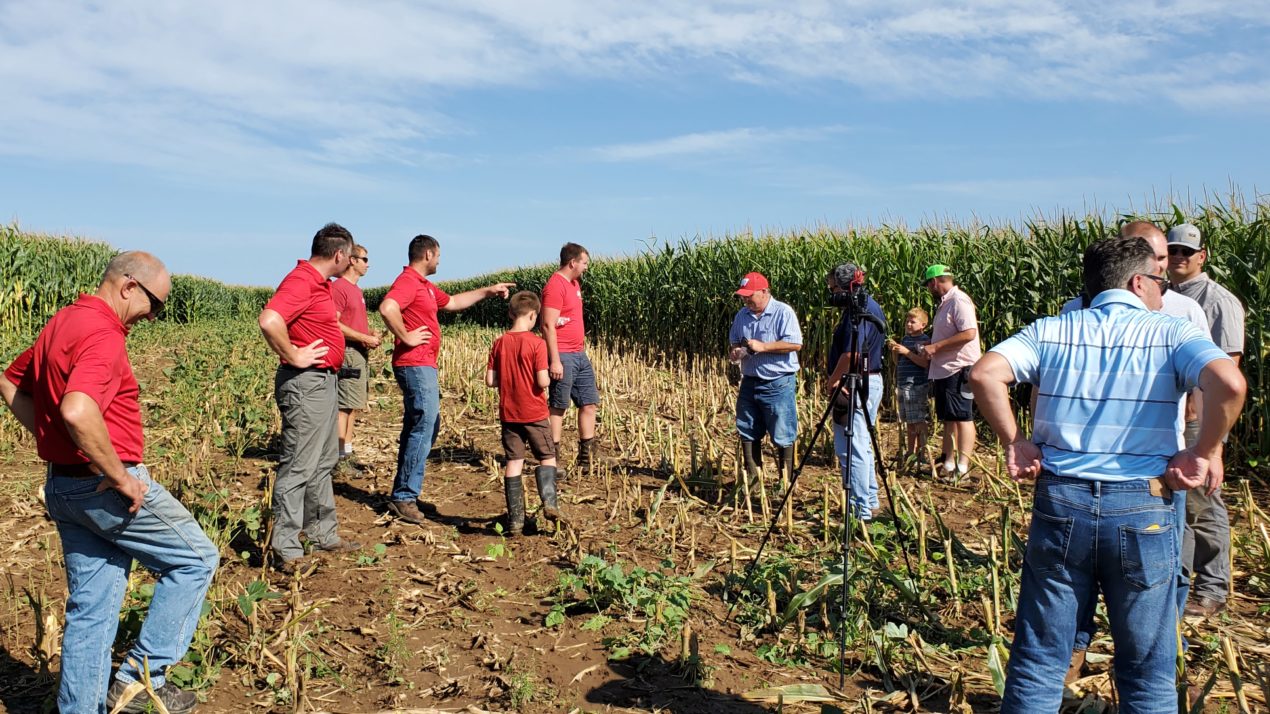
A conservation movement is growing in the Sheboygan River Basin, and a new analysis shows that modern farming practices are on the right track for reducing harmful runoff into streams and lakes.
Innovative practices adopted by members of the Sheboygan River Progressive Farmers (SRPF) are significantly reducing the chances of phosphorus and soil leaving the fields, according to an analysis shared by the state Department of Agriculture, Trade and Consumer Protection, the University of Wisconsin-Madison, and The Nature Conservancy.
Using survey data about farming practices among the farmer-led watershed conservation group’s members, the analysis estimated the potential impact of various practices compared to more conventional methods on typical crop and livestock operations in Sheboygan and Fond du Lac counties. The findings show, for example, that farmers using strip-tillage and no-tillage potentially reduce phosphorus runoff from farm fields by 43 percent and soil erosion by 42 percent.
Stopping phosphorus and soil sediment from leaving the fields improves water quality. For example, every pound of phosphorus that reaches a stream or lake can potentially cause the growth of up to 500 pounds of algae, degrading the waterway.
“It is great to see some of the good things our SRPF members are doing to protect the land and water in our farming communities,” Joe Wagner, a crop farmer who leads the group, said.
The five-year-old nonprofit group has grown to 30 farmer-members, who represent 20,671 acres and 7,486 dairy, beef and swine animals. The group collaborates with university researchers, environmental groups and community leaders, and they hold field days to demonstrate various practices.
“I was impressed that, even in the midst of a pandemic, Sheboygan River Progressive Farmers members found creative, safe ways to hold field days to share the conservation practices they were trying and what they were learning,” Steve Richter, agricultural strategies director at The Nature Conservancy, said. “I believe the increases in the number of members and acres in conservation practices from one year to the next can be attributed to the willingness of the SRPF members to share the benefits.”
SRPF members are regularly practicing other conservation techniques as well, like soil sampling, nutrient management plans and splitting the application of nitrogen fertilizer to times when the crops are growing and can best utilize it. Through the years, cover crops and no-till planting have been adopted by nearly every member of the group. This illustrates how members are helping each other find ways to make conservation practices work within their operations.
“The percent reductions in phosphorus and soil loss we are seeing in this survey are significant,” Richter said. “The water quality challenge we face is substantial, but the efforts of Sheboygan River Progressive Farmers’ members, and the efforts of all the farmer-led groups in Wisconsin, are making a positive impact.”
CONSERVATION PRACTICES
SRPF farmers have made noticeable changes to their practices. The most recent numbers (2019):
- 12,719 acres of conservation tillage practices (either strip-till or no-till planting)
- 20,363 acres covered by nutrient management plans
- 5,499 acres of cover crops
- 5,975 acres of low-disturbance manure injection
MORE ABOUT THE ANALYSIS
The analysis was completed as part of a conservation benefits tracking project initiated by the Wisconsin Department of Agriculture, Trade and Consumer Protection to evaluate effects of the state’s Producer-Led Watershed Protection Grants Program. The initiative was developed in collaboration with the University of Wisconsin-Madison Department of Soil Science and The Nature Conservancy. Wisconsin’s SnapPlus nutrient management planning software was used to calculate the potential annual phosphorus loss and soil erosion on fields when farms include practices such as cover crops and reduced-tillage.
While not every conservation practice provided significant reductions for each scenario, below are examples of the amount of phosphorus loss and soil erosion that can be avoided with the adoption of practices on agricultural landscapes in Sheboygan and Fond du Lac counties. Acreages of practices are based on the average number of acres implemented on SRPF member farms in 2019.
It is important to note that the calculations below are based on comparisons of generalized systems, not actual farms, and do not take into account the other watershed variables that impact how sediment and phosphorus make their way into a stream or lake.
For comparison, a mid-size dump truck can carry 10 tons of sediment, and 1 pound of phosphorous in a waterway has the potential to cause the growth of up to 500 pounds of algae.
Dairy farm with a corn silage, soybean and alfalfa rotation adopting 170 acres of small grain cover crops following corn silage and soybeans
Phosphorus loss reduction: 182 pounds
Soil erosion reduction: 213 tons
Corn/soybean farm adopting 165 acres of strip-tillage
Phosphorus loss reduction: 322 pounds
Soil erosion reduction: 330 tons
Corn/soybean/winter wheat farm adopting 264 acres of no-tillage
Phosphorus loss reduction: 378 pounds
Soil erosion reduction: 401 tons

